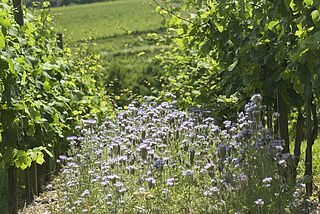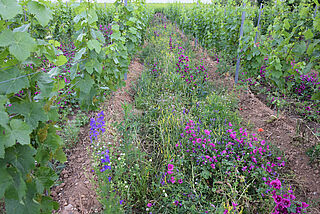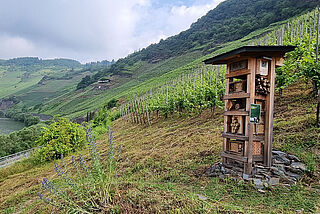Details
Organic Viticulture Prevalent in Germany
"In 2020, around 9,600 hectares of vineyards were cultivated organically throughout the country. This corresponds to a fourfold increase in the organic area compared to 2004 and a share of almost ten percent of the total German vineyard area," explains Ernst Büscher of the German Wine Institute (DWI) in Mainz.
Numerous wineries have also noticed an improvement in the quality of their wines as a result of switching to organic wine production. Many of them, however, do not publicise their organic cultivation methods much, as they take them for granted. Often, the conversion to organic viticulture takes place on the vineyards with the change of generations.
Balanced vineyard ecosystem
In organic viticulture, the goal is to maintain a balanced vineyard ecosystem and to promote biodiversity. To do this, all synthetic chemical pesticides are excluded, as are artificially produced fertilisers and herbicides. The conversion phase from conventional to organic viticulture takes three years.
"Organic winegrowers were pioneers in viticulture for a long time," explains Ernst Büscher. Many organic methods are now standard in conventional viticulture. These include, for example, the cultivation of fungus-resistant grape varieties (PiWis), the use of beneficial insects for pest control, the greening of vine rows or the effort to maintain the ecological balance in the vineyard.
For some years now, there has also been a trend in German viticulture towards biodynamic practices. It already has a share of about ten percent of organic viticulture. Biodynamic vineyards make even greater use of the forces of nature and are guided by the teachings of the anthroposophist Rudolf Steiner.
Organic wine, eco-wine, bio-wine
Since the 2012 vintage, an EU regulation has been in force that regulates not only external management in the vineyard, but also the technical preparation of organic wines in the cellar. For example, it stipulates lower limits for the maximum sulphur content of organic wines compared to conventionally produced wines. In addition, some wine treatment products are banned, some must be of organic origin and any genetic engineering, for example in the yeasts, is forbidden. Wines that have been produced according to these EU regulations by certified wineries can be called organic wine, eco-wine, or bio-wine. They can be recognised by the EU Community logo .
About half of the certified organic wine producers are also members of one of the organic associations, some of which prescribe further criteria for their membership. The most important associations for organic winegrowing are Ecovin, Bioland, Naturland and, for biodynamic wineries, Demeter and Respekt Biodyn, whose logos can also be found on the label. Founded in 1985, Ecovin is the largest association of organic wineries in the world. In 2022, the approximately 250 member wineries cultivated more than 2,700 hectares of vineyards in twelve German winegrowing regions.
Organic often an added benefit
Because organic viticulture places great emphasis on soil fertility and usually produces lower crop yields, organic wines often reflect the characteristics of the soil and climate in which the grapes were grown particularly well. Nevertheless, it is not possible to distinguish them in terms of taste from wines of equivalent quality from conventional cultivation. "Because the taste of wine is in the foreground when buying wine, organic is often an added benefit that people are happy to take because they are supporting environmentally friendly wine production," says Büscher. Thanks to their widespread distribution, organic wines now have a firm place in consumers' shopping baskets.
Terug Print



